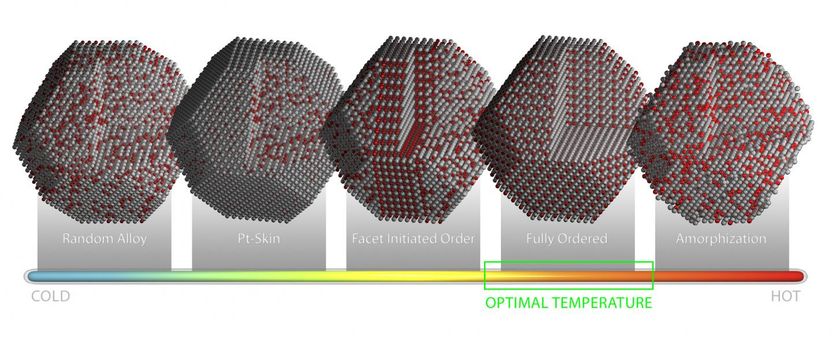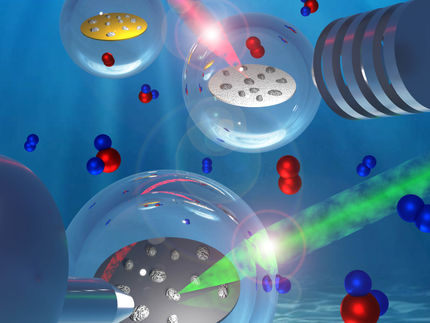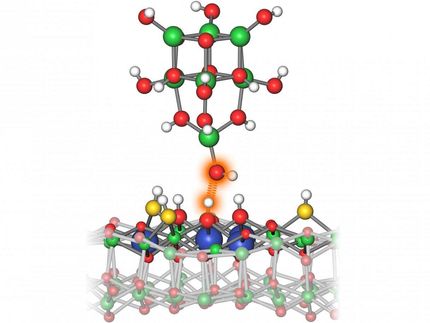Microscopy captures real-time view of evolving fuel cell catalysts
Atomic-level imaging of catalysts by scientists at the Department of Energy's Oak Ridge National Laboratory could help manufacturers lower the cost and improve the performance of emission-free fuel cell technologies.

Models of platinum-cobalt nanoparticle catalysts illustrate how specific atomic configurations originate and evolve as the particles are heated.
Illustration by Andy Sproles, Oak Ridge National Laboratory, US Department of Energy
Fuel cells rely on costly platinum catalysts to enable the reactions that convert chemical energy into electricity. Alloying platinum with noble metals such as cobalt reduces the overall cost, but such alloyed catalysts vary in performance based on their atomic structure and processing history.
An ORNL team used scanning transmission electron microscopy to track atomic reconfigurations in individual platinum-cobalt nanoparticle catalysts as the particles were heated inside the microscope. The in-situ measurements -- acquired in real time in the vacuum of the microscope column -- allowed the researchers to collect atomic level data that could not be obtained with conventional microscopy techniques.
"This is the first time individual nanoparticles have been tracked this way -- to image the structural and compositional changes at the atomic level from the start of an annealing process to the finish," ORNL coauthor Karren More said.
Very small changes in the positions of platinum and cobalt atoms affect the catalyst's overall activity and selectivity, so annealing -- a gradual heating, holding, and cooling process -- is often used to modify the alloy's surface structure. The ORNL in situ microscopy experiments documented exactly what, when and how specific atomic configurations originate and evolve during the annealing process.
"You can anneal something from room temperature to 800 degrees Celsius, but you don't know at which point you should stop the process to ensure the best catalytic performance," lead author Miaofang Chi said. "Because you don't know how the particle evolves, you might be missing the optimum surface configuration."
The atomic-level detail in the ORNL study will guide researchers and manufacturers who want to fine-tune their catalysts' atomic structure to meet the demands of a specific application.
"This work paves the way towards designing catalysts through post-synthesis annealing for optimized performance," Chi said.
Original publication
Other news from the department science

Get the analytics and lab tech industry in your inbox
By submitting this form you agree that LUMITOS AG will send you the newsletter(s) selected above by email. Your data will not be passed on to third parties. Your data will be stored and processed in accordance with our data protection regulations. LUMITOS may contact you by email for the purpose of advertising or market and opinion surveys. You can revoke your consent at any time without giving reasons to LUMITOS AG, Ernst-Augustin-Str. 2, 12489 Berlin, Germany or by e-mail at revoke@lumitos.com with effect for the future. In addition, each email contains a link to unsubscribe from the corresponding newsletter.






















































